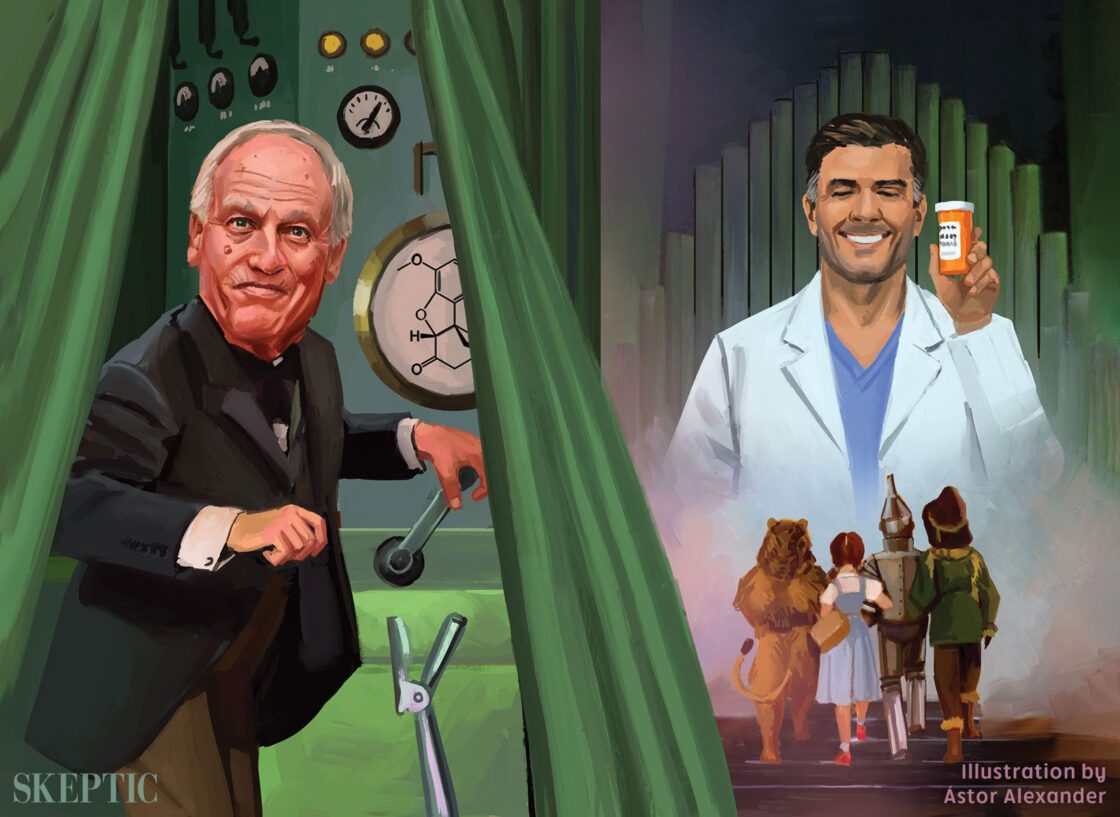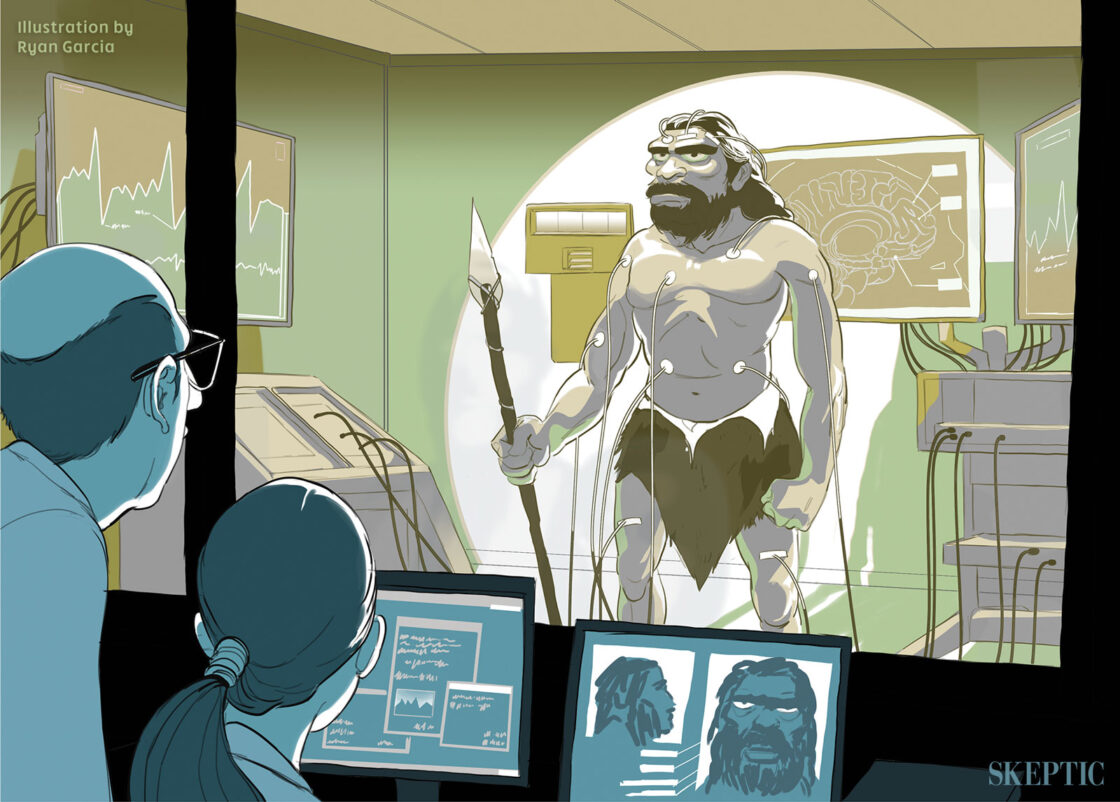The United States contains nearly 14,000 different school districts. They are constantly pitted against each other in destructive forms of mock-combat and competing to outdo each other in student test scores and student entry into post-secondary institutions. This competitive structure empowers an administrative class, pressured by the community, to oversee (and frequently abuse) teachers, and this in turn is driving a teacher shortage.
The pressure placed on the classrooms has become overwhelming, driving classroom educators out of the system, and there are serious signs of an educational collapse. For example, the state of Florida is currently looking to fill over 5,000 teaching positions,1 and the state of Massachusetts had to call out the National Guard to drive school buses. A report from the Alliance for Excellent Education stated that “over 1 million teachers move in and out of schools annually, and between 40 and 50 percent quit within five years.”2 In 2021, 2 out of 3 school districts reported a teacher shortage, with urban and rural school districts feeling the most severe effects. Shortages of other school personnel are being felt by just about every school district in the country.3
Typically speaking, states fund school districts through lump-sum payments and the districts spend their money accordingly. This means that most districts feature impressive sports facilities and well-compensated administrative teams, but too few bus drivers, substitutes, and classroom teachers. In elementary schools, a teacher absence is often handled by combining the absent teacher’s classes under another teacher, which means that an elementary education teacher with 25 students could be confronted with 50 students on any given day.
States are developing novel ways to deal with the shortage, most of which involved trying to make it easier to become a teacher by downgrading the requirements for teacher licensing. A recent law passed by the Indiana state legislature called for the decentralization of the state’s teacher licensing process; this would allow each of the nearly 300 school districts in the state to set their own teacher licensure requirements and hire laypersons as “adjuncts.”4 Taken to an extreme, one could imagine this reaching the point that anyone who could pass a background check would be licensed to teach. The result would be untrained teachers simply monitoring a pre-bought online curriculum, a situation which, tragically, is already in place in some parts of Mississippi.
There is a way to prevent such a calamity that is both cost- and educationally effective. However, implementing it would require a clear identification of the problems with the current system of K–12 public education. As is the case with many American institutions, the best way to understand its operation is to follow the money.
Public Schools and Local Economies
There has long been a corrupting connection between local public schools and the economies of local communities, and one that was exacerbated by the No Child Left Behind Act (NCLB) of 2000. NCLB incentivized the major contradiction of public education by pitting schools against each other in competition while at the same time demanding equality in testing outcomes. Broadly speaking, NCLB sought to impose a business analogy onto the public schools, so that school districts could be judged by standardized test scores in the same way that businesses can be judged by their stock prices or quarterly reports.
Since public school entry is determined by zip codes, NCLB created a seller’s market in “good” school districts, which were typically defined as such by having test scores that were 30 percent or more above average. According to the National Bureau of Economic Research, a dollar spent on public schools leads to a twenty-dollar increase in home values.5 Almost no broad-scale economic analysis linked NCLB with the 2008 housing market crash, but real estate agents have long recognized the impact of the perceived quality of local public schools on property values. The evidence is striking, and a prominent national realtor website encourages real estate agents to run for their local school boards by including this fascinating passage:
A (…) recent study by the Brookings Institution found that housing costs tend to be higher in areas where high-scoring schools are located. The study, which looked at the 100 largest metro areas in the country, found an average difference of $205,000 in home prices between houses near high-performing and low-performing schools. Homes around high-performing schools also tended to be larger, with 1.5 more rooms than homes near low-performing institutions. In addition, the number of rentals in areas near high-performing schools is around 30 percent lower.6
Parents who can pay that much extra money for access to good schools are also consumers who will spend money in local businesses, so local chambers of commerce also recognize the positive economic effects of having a “good” school district.
This is one reason why public schools are so politically divisive: conservatives who tend to describe public schools as “socialist” in nature and dominated by corrupt teachers’ unions might not recognize that suburban public schools are often the primary factor in driving local capitalism. Liberals who see public schools as the great American equalizing factor fail to recognize that a system that pits districts against each other in constant competition for such high stakes has the effect of relegating students who are in poverty into sub-standard schools, while channeling students in “good” schools into high-pressure environments where signaling success, rather than really learning anything, becomes the priority.
A Business Analogy Superimposed
In the late 1990s and early 2000s, three points converged: (1) a slew of studies indicated that the quality of the classroom teachers was the only in-school factor that mattered for improving classroom achievement;7 (2) NCLB pressured schools into greater levels of competition; (3) the administrative class became more empowered to “hire the best and fire the worst” teachers. While it was certainly true that teachers unions in certain big cities such as New York and Chicago have misused their power in some cases, unions have little to no power in most southern and midwestern states.
NCLB empowered the administrators over teachers, and the administrator class tended to equate an abusive management style with effective leadership. Virtually every public-school reform movement allowed administrators greater leeway to abuse the teaching staff. In Reinventing America’s Schools: Creating a 21st Century Education System, a charter school principal in New Orleans (quoted by the author David Osborne) explains what actions led to her winning the 2015 Louisiana Middle School Principal of the Year Award:
She did not mince words when explaining her success: “If something does not work for my children here at Behrman, be it a teacher, be it a textbook, I can get rid of it. I got to handpick teachers…” And those teachers “understood that things were different, that if they did not perform, they did not have to be here the very next day.”8
A significant section of the public seems to applaud such an approach toward teachers, and this administrative attitude is prevalent in virtually all school-reform models. In the 21st century, no book has had more influence on public education than Whatever it Takes: How Professional Learning Communities Respond When Kids Don’t Learn (2004) by Rick and Rebecca Dufour, Robert Eaker, and Gayle Karhanek. The authors renamed teacher teams as “Professional Learning Communities” (PLCs) and then tacitly endorsed an administrative leadership model based on coercion and intimidation when they wrote, “the principals faced a challenge of one or more new staff members who were either aggressively or passively resistant to the new direction of their school.” In the same book, they highlight an administrative tactic for dealing with recalcitrant teachers:
Sale-Davis even went so far as to hand out transfer requests to all her staff, encouraging them to apply for a transfer if they were unwilling to embrace the ideas of consistent learning outcomes, common assessments, and collaborative culture. The faculty came to understand that the school stood for certain principles that every staff member was expected to honor.9
This excerpt represents a typical administrative tactic. Teachers are not to be listened to, their objections to yet another new initiative or school reform model are labeled as “resistant,” and the school reform model is then defined in purely beneficial terms so that any teacher who asks questions or risks a criticism can be coerced into leaving. Giving administrators such extra power is flawed for two reasons.
First, it’s not clear what administrators are looking for when evaluating teachers. A well-meaning 2019 Edweek piece by Denisa Superville quotes an elementary school teacher in California on what she looks for during her five-minute classroom observations:
Are [students] using the academic language that is aligned with content standards? (…) Are they asking questions that indicate that they’re actually processing the information, or are they asking surface-level questions because they don’t understand what’s being presented? I’m also looking to see if they’re using one another for resources, rather than having kids raising their hands and asking the teacher for help.10
It is entirely possible that none of the behaviors the principal is looking for indicates whether students are actually learning. The reason is that the concept of a teacher evaluation is connected to a flawed conception of testing in education — but more on that shortly.
Two, the method of “hire the best and fire the worst” is predicated on the idea that there is a large pool of highly effective teachers to take the place of the so-called “worst.” This approach requires no investment from administration to actually work with teachers, it reinforces the power of the hierarchy and so instills a persistent fear into the structure, and it is broadly popular with the public. Such an approach, however, cannot improve educational outcomes overall. By analogy, if a hospital president fired the worst surgeons and then hired the best ones from high-need areas, she would have improved the outcomes for her own hospital, but to the detriment of the hospitals around her.
School districts are almost always required to conduct a certain amount of professional development sessions with teachers and this includes school safety training. There is vast amount of money to be made in selling such trainings to 14,000 school districts, and these “trainings” are always top-down in structure, and frequently either worthless or downright abusive.
A 2019 incident in Monticello, Indiana provides an extreme example. Elementary school teachers who showed up for professional development on school safety were repeatedly shot with air-soft guns by local sheriff’s deputies. The purpose of the shooting seems to have been to remind these elementary teachers that if they failed to fight back against a shooter, then they would just be riddled with more bullets.11 Although the teachers suffered from welts and psychological stress from the incident, they could not bring a lawsuit against the district because of state law. They could not even speak out publicly or at a school board meeting about the professional development because of strict contracts that prevent teachers from portraying their school districts negatively.
Given the vast scale of the nation’s teacher shortage, and the fact that abusive administrative styles are prevalent and celebrated, one might think that the topic of abuse towards teachers would be the subject of intense interest and research. In fact, only one book seriously takes on the topic. Joseph and Jo Blasé, in a 2002 book titled Breaking the Silence: Overcoming the Problem of Principal Mistreatment of Teachers, began their analysis by noting that abuse of teachers by principals is “a problem for which there exists literally no research base.”
Breaking the Silence is a qualitative study with dozens of interviews from teachers, some of them with excellent records, even teaching awards, who detailed the sustained emotional and psychological abuse they suffered from principals. The authors note that they sought to expose “what may be a surprisingly common problem that has alarmingly destructive effects on teachers as professionals and as people, one that reaches directly into classrooms to drastically undermine and even destroy opportunities for effective instruction and student learning. The power holders who create this problem and those who collude by permitting it to continue are participating in a phenomenon that has the potential to devastate an entire school, even an entire school system, by relentlessly and unconscionably crushing its spirit and destroying educators’ morale.”12
Although the authors followed-up with a 2006 paper, their work has largely been ignored by the educational establishment. Research studies on administrative abuse of teachers remain almost nonexistent. Still, one can see trends in the research. A 2011–2012 Met Life survey indicated that 95 percent of the teachers who reported that their administration was supportive, also indicated a high level of job satisfaction. Only 65 percent of those teachers who disagreed that their administration was supportive also reported a high level of job satisfaction.13 Obviously, while not all school administrators are abusive, there are few institutional checks on those who are; and when administrators engage in what might loosely be called “unsupportive” behaviors, the result is massive turnover.
Tests, the Seat Time Model, and the Mastery Learning Model
American public education does not lack critics, but the public criticisms of education are currently so overwhelmed by questions about Critical Race Theory and circumstances caused by COVID precautions, that too few people seem to be noticing the antiquated system of teaching and testing that is at the core of the structure, or the fact that what is taught in schools only tangentially connects to the needs of American society or the economy.
The problems with the school curricula of grades 7–12 are too overwhelming to describe here, but The Case Against Education: Why The Education System is a Waste of Time and Money (2018)14 by Bryan Caplan and The Maths Fix: An Education Blueprint for the AI Age (2020)15 by Conrad Wolfram both ask some uncomfortable questions:
- Why do we want millions of high school graduates who can speak just a little bit of a foreign language?
- Why do we prioritize English literature over scientific/technical writing?
- With computers being so mathematically capable, why does math education focus on hand calculations?
- Are employers clamoring for workers who have memorized a few facts about the Ottoman Empire?
The problem here is that the Seat Time Model (STM) simply forces schools to be open for a certain number of days in the year and requires that students be present for those days. In this model, students receive their learning from teachers and tests are administered as autopsies — a final report that determines what was learned and what was not learned. Those tests exist only to sort some students into elite high school programs and eventually into universities.
Tests by themselves are not bad, of course, but the Scholastic Aptitude Test (SAT) is hardly connected to any real-world skills because test takers and many university admission offices see the final score as an end in itself. An online advertisement for the Princeton Review mathematics portion states that “the SAT only tests your ability to take the SAT” and the Princeton Review SAT mathematics preparation books frequently exhorts test takers to Plug In The Answer (PITA), which involves taking the answers and submitting them for X, or solving the problem by assuming a number for X and then seeing which answer matches the response. Such an approach has no function outside of a mathematics test with multiple-choice options.
The grades themselves contribute to high levels of student anxiety, and bad grades and scores consistently have negative effects on self-esteem. A Mastery Learning Model (MLM) would treat testing as a consistent part of the learning process. The STM encourages the idea that a lesson is taught and that a single test determines whether that content has been mastered. A MLM approach would allow students to keep taking a variation of the assessment until mastery is achieved. A 2018 NEA study indicated that 70 percent of students reported that anxiety was a “major problem” among students.16 “Test anxiety” is a modern phenomenon among students but only because tests are seen as final judgments on student learning, and students all too often see the assignation of a letter grade as a commentary on their general intelligence or self-worth. If tests could be taken and re-taken until mastery is achieved, then there would be no reason for anxiety because a low score would simply reflect where a student currently is in the process.
To use an easy explanatory example, download “World Map Quiz” onto your phone. The “quiz” can be taken at three levels: easy, medium, or hard. For a geography novice who just wanted to know where the “major” countries are on the map, a mastery of the easy level will likely suffice. The quiz lets you challenge yourself to the edge of where your interest in the topic lies. For the sake of argument, let’s say that we make it an educational goal for every student to know where every country is located on the map. A novice who takes the quiz once or twice will just conclude that he is “bad at geography”; if he takes the quiz several times he will almost certainly know where all the countries are on the map. World Map quiz corrects all the wrong answers with immediate feedback.
Something similar could be done with just about any topic. The technology exists to do it, but the concept threatens a vast and expensive system, where the bureaucracy only exists because of the structure’s inefficiencies.
Change is Needed
In January of 2021, Skeptic published a piece I had written titled “The Future of Higher Education: Reengineering Learning for a Post-Pandemic World.” In that article, I argued that colleges and universities could not continue to raise prices for learning that can now be accessed for free on YouTube. I specifically pointed to MIT’s open-source programs and micromasters degree (which can be attained for a thousand dollars or a little more) as having the strongest potential to make a market correction.
In June of 2021, MIT sold its micromasters program to EdX for 800 million dollars.17 This sale should be considered the market correction for higher education because EdX will soon be able to promote a Mastery Learning Model through online modules that will confer the status of an MIT credential. In just a few years, the entire economic model for higher education will have shifted to a new reality. The MIT/EdX deal is to Higher Education what the Protestant Reformation was to the Catholic Church.
K–12 schools are not as subject to market forces, as they only benefit tangentially from the rise in property values that their reputations tend to create. There will be no sudden market force correction. Instead, there are really only two immediate futures:
1. If nothing is done.
The teacher and staff shortages at the K–12 level show that fewer and fewer people are willing to work in a school setting. Parents and community members who raged at school closures during the pandemic have largely not been willing to take on roles as bus drivers or substitutes. This is evidence that parents consider themselves customers who demand services from schools rather than as community members who owe their school time and service. It is not possible, at this time, to correct the staff shortage problems because it takes years to properly educate teachers and so the likely response from state legislatures is just to continually lower minimum teacher qualifications standards.
Such a debasing means putting “teachers” in the classroom who don’t know how to teach. The only option available for administrators in such a circumstance will be to buy an online curriculum and have students do their work through online modules while being supervised by an adult. K–12 education will quickly come to look like the current state university model, where administrators and coaches make all the money and leave the actual educating to graduate students and/or lowly-paid adjuncts — with the “teachers” in K–12 really being paid to report disciplinary infractions.
2. If something is done.
High quality MLM modules can be created with the MIT/EdX technology as a guide. These can be dispensed to every school district in the country. The modules would educate on the basics, but teachers would then be connected to their local business and intellectual community through a new form of professional development. If the MLM had gaps deliberately placed in it, then these teachers could create high-quality lessons, connected to the local community’s job-training needs, to fill those gaps. Teachers would be treated more professionally, would not have to grade papers, could be celebrated for their creativity in connecting their classrooms to the community, and fewer teachers could facilitate education with more students, thus effectively addressing the shortage.
To explain very simply, some educational processes, such as learning mathematics, are linear in their progression. Yet other educational processes, e.g., seeing connections across disciplines or developing a creative talent, are non-linear. Linear learning is ideal for a Mastery Learning Module while non-linear learning is better facilitated with a teacher. Once students develop interests, teachers can direct them to the right books, programs, and community members to help facilitate creativity and non-linear learning. If that community connection involves student X painting a mural with a local artist and student Y learning how to change a car battery with a local car mechanic, then so be it. Education should be beneficial.
If option 2 seems cheap, effective, and aligned with common sense then readers might be wondering why something similar has not already been implemented. The answer is that school administrators are employed precisely because of the system’s inefficiencies, and so there are no incentives for them to improve the current situation.
How to Implement It
The nature of school districts ruins every effort to reform or help. The Biden administration’s recent education bailout provides the best recent example. The Associated Press has reported that despite shortages in teachers, substitutes, bus drivers, and other essential personnel, many school districts are spending their federal COVID relief funds on sports facilities.18 Many schools, seeking to fill empty teaching positions, offered large signing bonuses that lured teachers from one school to the next, disrupting education for students in high need areas and providing no overall effect for the positive.
Therein lies a major problem in education funding: state and federal tax dollars are given to school districts and the administrators then spend those funds at their discretion. This has produced a situation wherein administrators spend money on the things they care about: this would include their own salaries and benefits, enlarging the bureaucracy, and funding gaudy athletic and academic programs that impress the public. Add to this the toxic environment currently being created by some community members who are worked up over political issues, it becomes clear that implementation can only occur by: (1) bypassing local school bureaucrats, and (2) framing MLM as a choice.
Educational administrators have only made the problems of education worse. If this statement seems extreme, remember that collegiate administration at Michigan State University could not even be trusted to protect children from a sexual predator.19 The federal DOE is going to have to centralize and simplify by tying federal dollars to a MLM and requiring that schools offer the MLM next to the STM. A MLM module can be replicated infinitely and provide a quality education to every student; the bureaucracy will have no purpose. We cannot expect reform to be implemented by the people who will be put out of work by its implementation.
Almost everything in American culture has to be framed as a personal choice. If the federal DOE would require that schools offer the MLM next to the STM, then parents and students could pick which model they prefer. About 3 million women left the workforce when the schools closed due to the 2020 pandemic shutdown,20 so school buildings clearly need to be open, but an MLM can be completed in either a school building or at home, while at the same time offering a flexibility to scheduling that cannot be matched by the STM.
Given that more employees are now working on their jobs from home, and that high-speed internet access is reaching rural areas of the country, it seems inevitable that population pressures on the suburbs will relax at some point. This will likely increase demand among parents for high quality educational modules that can be implemented anywhere and will be something that students in poverty can access regardless of their outside-of-school circumstances.
Recognize the Absurdity of the Current System
The current educational structure creates too much pressure on young people, with the conceit being that students must earn grades in their early teen years, or else be relegated to second-class educational institutions. The future of higher education is going to consist of high-quality Mastery Learning Modules, where any work that can be done independently will be done independently, and where face-to-face contact will take place for any educational activities that are not best facilitated through a module. Individuals can learn to mastery at any point in their own lives, and the goal of education should not be to make students compete for grades, but to ensure that every student has an opportunity to learn a subject or skill until mastery.
For education to reform, the current model with its byzantine bureaucracy and archaic funding systems must be replaced. A Mastery Learning Model will allow educators to collaborate for the purpose of improving educational outcomes for all students, and can end the pointless competition for prestige and property values facilitated by the competitive nature of the current structure. Such educational reform will be bad for all those in positions no longer needed, but great for students. ![]()
References
- https://cnn.it/3uVntbm
- https://bit.ly/3OxW7js
- https://bit.ly/3uUs6lS
- https://bit.ly/3KW6Gus
- https://bit.ly/3JTyUVd
- https://bit.ly/3xU6WXh
- Ingersoll, R. M. (1999). The Problem of Underqualified Teachers in American Secondary Schools. Educational Researcher, 28(2), 26–37
- Osborne, D. (2017). Reinventing America’s Schools: Creating a 21st-Century Education System. (pp. 40–41). Bloomsbury.
- DuFour, R. (Ed.). (2009). Whatever It Takes: How Professional Learning Communities Respond When Kids Don’t Learn. (pp. 143–144). Hawker Brownlow Education.
- https://bit.ly/3vtn3Ir
- https://bit.ly/3xAlDhJ
- Blase, J., & Blase, J. R. (2003). Breaking the Silence: Overcoming the Problem of Principal Mistreatment of Teachers. (p.1). Corwin Press.
- https://bit.ly/3uTU15n
- Caplan, B. D. (2019). The Case against Education: Why the Education System Is a Waste of Time and Money. Princeton University Press.
- Wolfram, C. (2020). The Math(s) Fix: An Education Blueprint for the AI Age. Wolfram Media Inc.
- https://bit.ly/3vx08vC
- https://bit.ly/3uVHpuQ
- https://bit.ly/3vvRP3m
- https://bit.ly/3ryCWfy
- https://cbsn.ws/3OndMdh
About the Author
Chris Edwards, EdD, teaches AP world history and an English course on critical thinking at a public high school in the Midwest and is the author of To Explain it All: Everything You Wanted to Know about the Popularity of World History Today; Connecting the Dots in World History; Femocracy: How Educators Can Teach Democratic Ideals and Feminism; and Beyond Obsolete: How to Upgrade Classroom Practice and School Structure. He is a frequent contributor to Skeptic magazine.
This article was published on April 20, 2022.


















I agree with most of this article but have some real problems with MLM and the idea that students can learn just as easily from home or anyplace. If the pandemic showed us anything it is learning from “anywhere” isn’t the best place to learn. In my AP subject I saw my 5 year average of passing students from 2015-to 2019 drop from 85% to 60% in 2021. Globally the same five-year average had an average of 65 and dropped to 54 in 2021. These are supposed to be are most gifted students. In my on level classes we saw huge numbers of students fail classes at unprecedented rates. As for MLM itself I have watch kids guess, retake, guess, retake, repeat, forever, without ever trying to learn the material. If the goal of education is students learning meaning material they need to be in the classroom with a highly skilled teacher. Yes we need to reform what it is we want them to learn and stop the focus on higher education but your solutions of allowing students to use MLM at least in an form I have seen and learning at home at their own pace is not the answer.
The overriding question is “For what purpose are we educating people”?
The old adage that a “good” education [i.e. grades and a degree] = the ability to have the big house, car, and “lifestyle” to go with it has been shown in the current global economy to be remarkably futile. Graduates in various subjects remain unemployed.
So, do we teach children the pleasure of knowledge for its own sake and the ability to think critically for themselves or do we use the “factory model” outlined in the article where we churn out what is effectively a mass produced product and just hope that somehow each “product” manages to find some fulfilment in its life?
If we do not value human life above all else and If we can’t somehow teach kids the value of a human life, then we will continually have episodes like Cambodia under POT and Germany under Hitler and Russia under Putin and N Korea under Kim and on and on and on. And we can’t scare students into that goal by promising hell if they do not abjectly obey as religions thought they could do. We have to let kids interact, but we also have to prevent the strong from harming the weak and the smart from gaming the slow. That is called justice, and it is critical if a society is to grow and prosper. A society that places money above all or as the primary goal (as is more and more common throughout the world) will never survive. Both power and money corrupt absolutely because one is the source of the other.
Even if America taught everyone in this nation the value of human life it would not prevent a foreign Hitler, Stalin, or Pol Pot from committing atrocities overseas.
Also, a certain percentage of human beings are sociopaths and whatever we teach them intellectually about the value of life, they won’t internalize it.
Some good ideas but: Students have always been under pressure to excel on tests. I took the SAT in 1966 and it was no different. Working at any significant job is pressure.
If administrators don’t judge, hire and fire who will? Again that’s basically how the entire economy works. And guess what, sometimes bosses aren’t fair.
The problem is not that administrators run schools – the problem is that they are running schools for their person benefit rather than to the benefit of the school and the students.
When they judge who to fire, they consider whether the teachers kowtow or pushback on bad ideas.
I am a retired public-school teacher. Public schools were established on a “factory model” meaning raw materials “children” enter the factory at one end and twelve years later emerge a “finished product” with a warranty, i.e., diploma certifying they have achieved a certain level of development. This model has always existed with only a few notable exceptions. In short, the system has always been and is still dysfunctional. Teach children to think then get out of their way. They’ll figure it out
Where in the world did you come by your problem solving skills.? How arrogant! You are basing your conclusions on K-12 only and in midwestern states. I have read hundred of these conclusions before. Yours is no more valid than many others.
Why not call them survival skills for 21st century? Why not include higher Ed & beyond?
I teach at a CA Community College and our system is approaching collapse, too.
At one time CC’s were the best second chance for folks who wanted to get an education in these times of an information economy. Construction workers who realized they cannot do that work into their 60’s would start taking classes so they could get a less physically demanding job.
But they are changing the rules so we cannot serve that demographic as well.
Also, the Administrations abuse CC faculty, too. My district (which shall remain nameless) consistently violates our contract and our Faculty Union has filed complaints with the state Labor Relations Board. The Admin don’t care because the rules are different for colleges than for businesses violating contracts.
Ironically, CC admins do this because there are countless qualified applicants to replace anyone who quits. The morale among CC instructors – especially part-timers – is plummeting because the Admin makes sure that no one can take pride in a job well done.
Things are not just bad but getting worse.
Honestly, it will take something huge to wake up America. Huge. Like a few teachers committing school shootings and targeting Admins. Short of that the problem will continue.
My love for mathematics in general occurred in Balboa High School, Canal Zone in the 1950s. The math teacher, Mr. Hummel, is the only name that I remember from so long ago. On the first day of class, he introduced himself and said that everyone who was in the class and attended daily was going to receive an “A”. Then he said “so now let’s learn some math.”
It was amazing how much I learned from that class.
You are both right and wrong.
Education is just that … it is a simple armoury that comes into play later for life navigation. There is a desire … even obsession to treat young age as final and not as work in progress.
Happiness is confused with success which is equated to money. Children are no longer children. What one knows is deemed with finality – when in fact it is but a stage of passing moment.
Meanwhile, most intelligent parents have given up on the public schools and are either sending their kids to private schools or homeschooling them. Public schools are now a dumping ground for kids from poor families who can not aford private schools nor stupid ones who do not know any better. Sending a child to school is child abuse.
Public schools do not educate and are not intended to. The purpose of public schools is to indoctrinate, not educate. They are intended to socialize kids to fit in with the current culture.
Public schools could be abolished and replaced by a real education system that would offer a wide range of courses in many subjects that kids could choose from, not a few compulsory classes in subjects some adults have decided are important. A free choice of what to learn chosen from a list of hundreds of subjects, with a diploma issued for passing any 20 subjects on that list would result in a more educated public without the element of compulsion that drives kids away from education.
Nobody needs to know algebra after leaving school. The current ideas in science are going to be obsolete in a few years anyway, so why learn them? Reading old plays is not education. It is not important to spell words according to some dictionary writer’s idea of how they should be spelled. Most of the school curriculum is junk knowledge, not need for anything except getting a diploma.
The really important subjects are logic and critical thinking skills as applied to politics, religion, science, and advertising. And those skills are not being taught in schools.
It should be possible to gain credit for travel, volunteer work in other countries, and other activities that are currently not regarded ass “education”. The junior year of high school could be replaced by a plane fare to Europe and a Youth Hostel card, with a written report due at the end of the trip. A year abroad would teach more of languages, geography, politics, history, and culture than wasting time sitting in a classroom would and would cost less too.
My advice to parents is to homeschool. My advice to teenagers is, if you must go to school, don’t take it too seriously. Grades are not important. The teachers do not know more than you do in many cases and even those who do should be ignored. What they try to teach is not important.
You have more important things to do in these years than satisfy school boards. The most important thing you can learn in school is how to deal with other kids. Making friends, going on dates, making out in the backseat of a friend’s car, spending time just hanging out with other kids, are more important to your future than formal school subjects that will be forgotten soon after you graduate and never used again anyway.
The school system cannot be fixed. It is broken beyond repair. The question now is, what to replace it with?
What?
“Nobody needs to know algebra after leaving school. ” Is this true for your vocation and life pursuits? It sure as heck isn’t for mine!
Ideas in science will become obsolete in a few years?
So, F=ma will become, F=mb?
Your words are hurtful and unjust.